You need proper annealing temperature because gold’s molecular structure transforms at around 1200°F, enhancing ductility by 30-40% and allowing dislocations to move freely. Without reaching this critical temperature, your gold remains work-hardened and brittle from manipulation, making it prone to cracking during fabrication. The heat eliminates internal stress and creates larger, uniform crystal formations that restore workability. Different karat alloys require specific temperatures—24K needs 1100°F while 14K requires 1200°F for ideal results.
Understanding How Temperature Affects Gold’s Molecular Structure
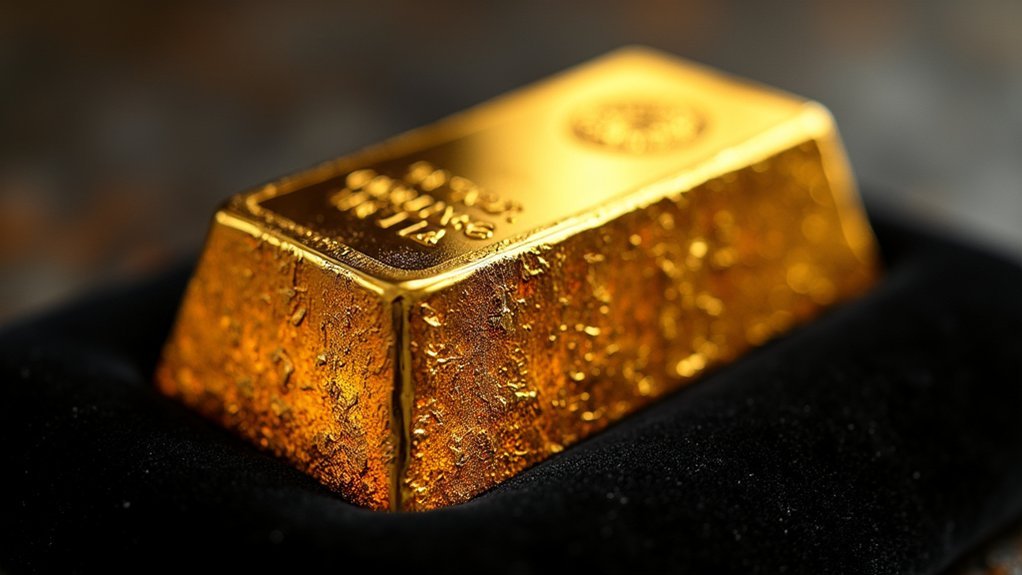
When you heat gold to its annealing temperature of around 1200°F (650°C), you’re triggering a fundamental transformation in its molecular structure that restores the metal’s workability.
This heat treatment allows dislocations within the crystalline structure to move freely, effectively reversing work hardening that occurs during hammering, rolling, or shaping. As temperature rises, grain growth begins, creating larger, more uniform crystal formations that eliminate internal stress accumulated from previous manipulation.
The reorganization process restores ductility by allowing atoms to settle into less strained positions. Without proper annealing temperature, your gold remains brittle and prone to cracking.
After heating, your cooling method matters greatly—whether you choose air cooling or quenching affects the final molecular arrangement, directly impacting how easily you can work the metal afterward.
Preventing Work Hardening and Brittleness in Gold Alloys
As you repeatedly hammer, roll, or shape gold alloys, you’ll create dislocations within their crystalline structure that accumulate into work hardening—a process that can increase the metal’s hardness by 20-30% with each significant manipulation.
Without proper annealing, your gold becomes increasingly difficult to shape and prone to cracking. Each alloy requires a specific temperature: 14K needs 1200°F (650°C) while 18K requires 1150°F (620°C).
When you skip this vital step, internal stresses build up throughout the metal, leading to brittleness and potential fractures that compromise your piece’s structural integrity.
Proper annealing restores ductility by reorganizing the crystalline structure, eliminating accumulated stress, and returning your gold alloys to their ideal workable state for continued manipulation.
Optimal Temperature Ranges for Different Gold Karats
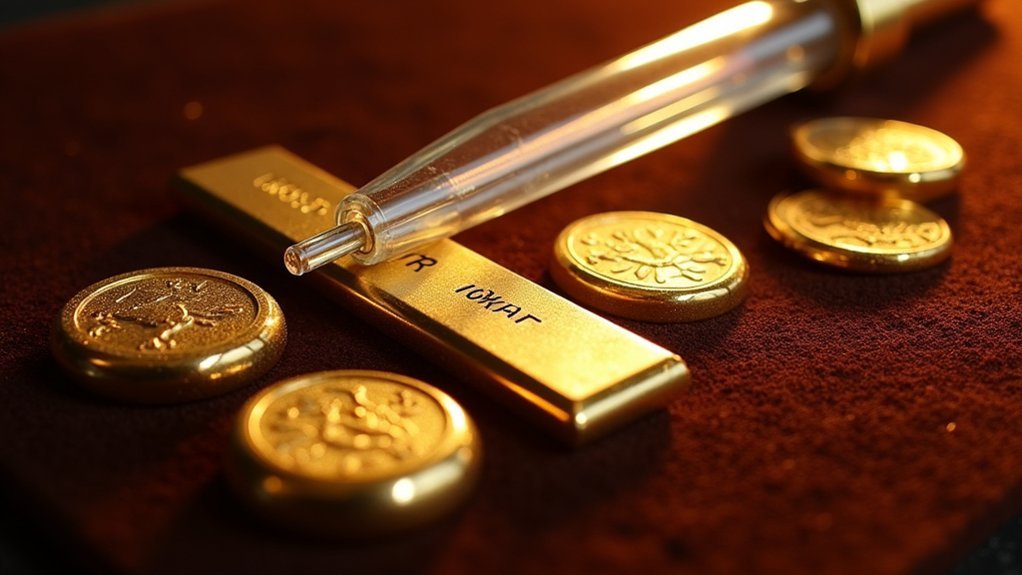
You’ll need to adjust your annealing temperature based on your gold’s karat rating, as each composition requires specific heat ranges for ideal results.
Higher karat golds like 24K need lower temperatures around 1100°F, while lower karat alloys such as 14K require approximately 1200°F due to their increased base metal content.
You can also use visual color cues during heating to gauge when you’ve reached the proper annealing temperature for your specific gold alloy.
Karat-Specific Temperature Guidelines
Different gold alloys demand specific annealing temperatures to achieve ideal results without damaging the metal’s integrity or altering its properties. You’ll need to adjust your annealing temperature based on your gold’s karat rating and alloy composition to effectively relieve stress from work hardening.
| Gold Type | Karat Rating | Temperature Range |
|---|---|---|
| Fine Gold | 24K | 1100°F (593°C) |
| Colored Gold | 22K-18K | 1022°F-1112°F (550°F-600°F) |
| Colored Gold | 14K-9K | 1202°F (650°F) |
| Palladium White | Various | 1202°F-1292°F (650°F-700°F) |
| Nickel White | Various | 1292°F-1382°F (700°F-750°F) |
Higher karat gold alloys require more precise temperature control, while lower karat alloys with increased base metal content need higher temperatures to restore workability effectively.
Color Recognition Techniques
When working without a pyrometer, visual color recognition becomes your primary tool for determining proper annealing temperatures across different gold karats. These color recognition techniques rely on the distinct hues metals emit when heated to specific temperatures.
You’ll notice gold begins glowing at lower temperatures, gradually evolving through various color stages until the metal becomes properly annealed.
For most gold alloys, you’re looking for a cherry red color that indicates the ideal annealing temperature range. Hold this red color and temperature long enough to guarantee complete stress relief throughout the piece.
The annealing process requires maintaining this visual indicator consistently across the entire workpiece, allowing the molecular structure to reorganize and restore the metal’s malleability for continued fabrication work.
The Science Behind Quenching Vs Air Cooling Methods
When you choose between quenching and air cooling after annealing gold, you’re fundamentally altering the metal’s internal structure at the atomic level.
Your cooling method directly affects how atoms reorganize themselves as temperature drops, which determines whether your gold becomes soft and workable or hard and brittle.
Understanding these metallurgical effects lets you select the ideal cooling technique for your specific alloy and intended application.
Metallurgical Effects Explained
Understanding the metallurgical effects of cooling methods requires examining how gold’s crystal structure responds to different temperature changes during annealing.
When you achieve proper annealing temperature and follow it with quenching, you’re rapidly freezing the metal’s molecular arrangement in its softened state. This prevents unwanted crystalline reorganization that occurs during slow cooling.
Air cooling allows gradual structural changes that can cause certain alloys to age harden, reducing workability. You’ll notice this particularly with nickel white gold, where controlled air cooling actually reduces residual stress better than rapid quenching.
However, 18K red gold becomes brittle with slow cooling due to precipitation hardening.
The cooling method also affects metal oxide formation on surfaces, with quenching minimizing oxidation exposure time compared to extended air cooling periods.
Optimal Cooling Techniques
Since different gold alloys respond uniquely to temperature changes, you’ll need to match your cooling technique to the specific metal you’re working with.
Quenching immediately after annealing prevents hardening in 18K red gold, requiring rapid cooling to maintain ductility. You should use air cooling for yellow gold to preserve softness, while nickel white gold benefits from slower air cooling that reduces stress in the metal.
When you quench from red heat above 1200°F, you’ll maximize softness and workability.
However, gold alloys containing certain metals can develop unequal stresses during rapid cooling, causing warping. Slow cooling leads to precipitation hardening in specific alloys, making them brittle.
Choose your cooling method carefully—proper technique enhances workability and prevents fractures during manipulation.
Common Temperature Mistakes That Damage Gold Properties
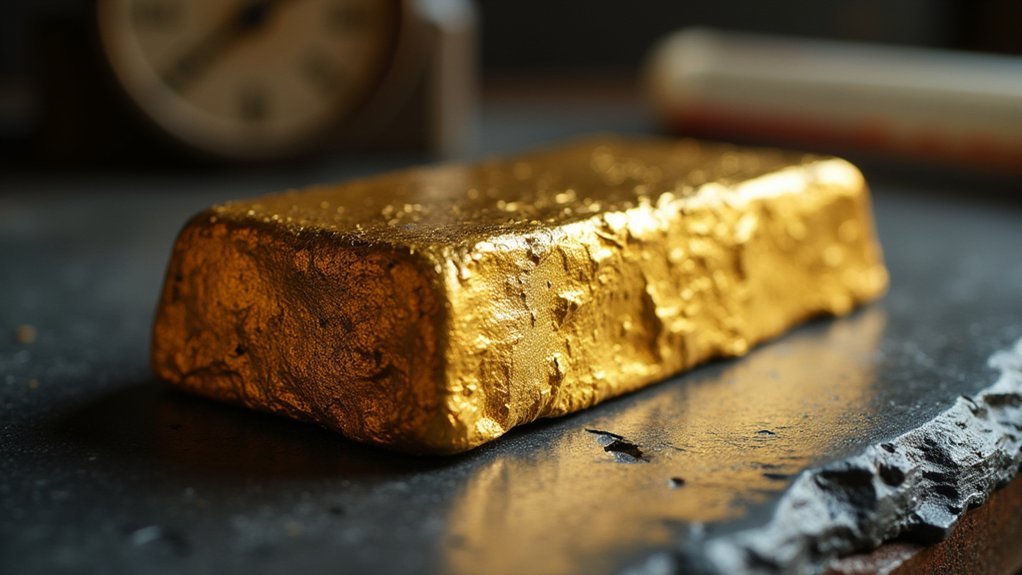
Even experienced metalworkers can damage gold’s essential properties by making vital temperature errors during the annealing gold process.
These mistakes can compromise your project’s integrity and waste valuable material.
Temperature errors that’ll ruin your gold work:
- Heating below 1200°F creates insufficient softening, leaving brittle metal that cracks under pressure
- Overheating gold beyond 1300°F destroys mechanical properties and causes unwanted oxidation
- Rushing the process with inadequate holding time fails to relieve internal stresses completely
- Using rapid cooling methods introduces dangerous residual stresses that weaken the final product
- Working in poor lighting conditions prevents you from seeing the vital dull red glow needed for proper annealing
Master these temperature fundamentals to protect your gold’s workability and structural integrity.
Achieving Maximum Ductility Through Proper Heat Control
Gold’s ductility reaches its peak when you master precise heat control during the annealing process.
You’ll achieve maximum workability by maintaining proper annealing temperatures—1200°F for 14K gold and 1150°F for 18K gold. These temperatures reorganize the crystalline structure, reducing dislocations and boosting ductility by 30-40%.
Your heating time matters considerably. Keep gold at temperature for 10-15 minutes to guarantee complete softening without overheating damage.
Once you’ve reached the target temperature, implement rapid quenching immediately. This prevents age hardening that would compromise the metal’s pliability.
Don’t underestimate timing precision. Too little heat won’t fully reorganize the metal’s structure, while excessive exposure creates brittleness.
Master this balance, and you’ll consistently produce gold with ideal ductility for professional metalworking applications.
Frequently Asked Questions
What Does Annealing Do to Gold?
When you anneal gold, you’re heating it to reorganize its crystalline structure, relieving internal stresses and reducing dislocations. This softens the metal, restoring its malleability and ductility for easier manipulation.
What Is the Purpose of Annealing Temperature?
You’ll use annealing temperature to restore your gold’s ductility after it’s become work-hardened. This process eliminates internal stresses, reduces hardness, and makes the metal easier to reshape without cracking or breaking.
Why Is the Annealing Process Important?
You’ll restore ductility and reduce internal stresses through annealing, preventing brittleness that increases 20-30% with manipulation. It’s essential for creating intricate designs and avoiding cracks during subsequent metalworking processes.
How to Anneal Gold for Jewelry Making?
Heat your gold to 1200°F for 14K alloy, maintaining temperature for 10-15 minutes. Watch for salmon-pink glow indicating readiness. Apply boric acid coating beforehand, then quench in water and pickle afterward.
In Summary
You’ll achieve ideal gold working properties when you master proper annealing temperatures for your specific karat weight. By understanding how heat affects gold’s molecular structure, you’re preventing brittleness and work hardening that’ll ruin your pieces. Don’t rush the cooling process—whether you’re quenching or air cooling depends on your gold’s composition. Control your heat precisely, avoid common temperature mistakes, and you’ll maintain maximum ductility throughout your metalworking process.



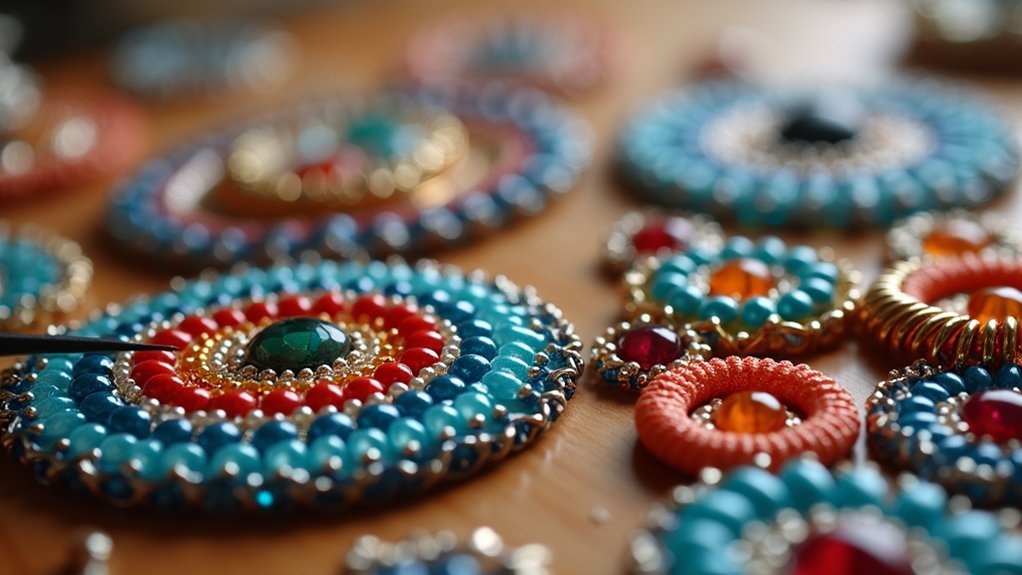
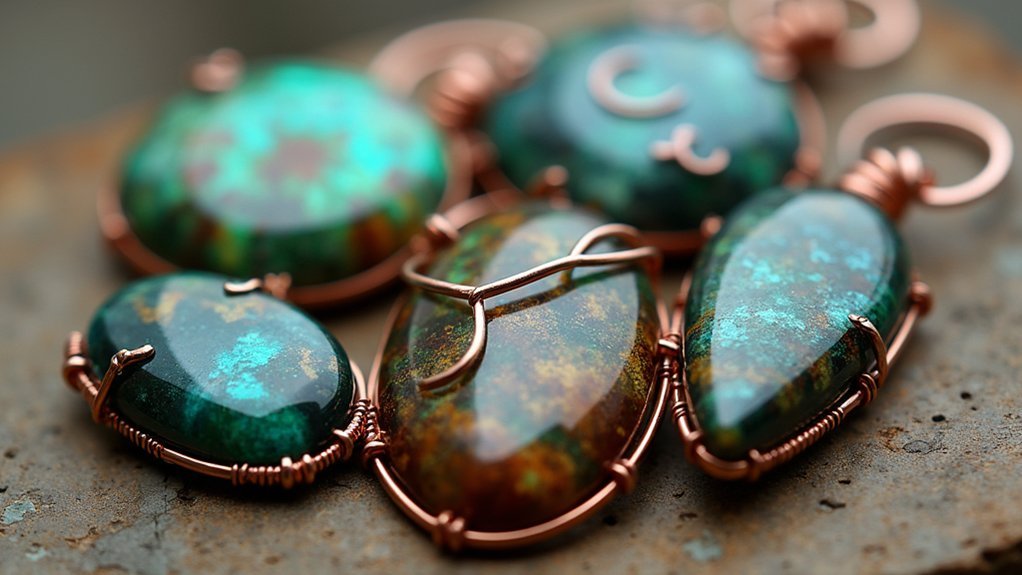
Leave a Reply